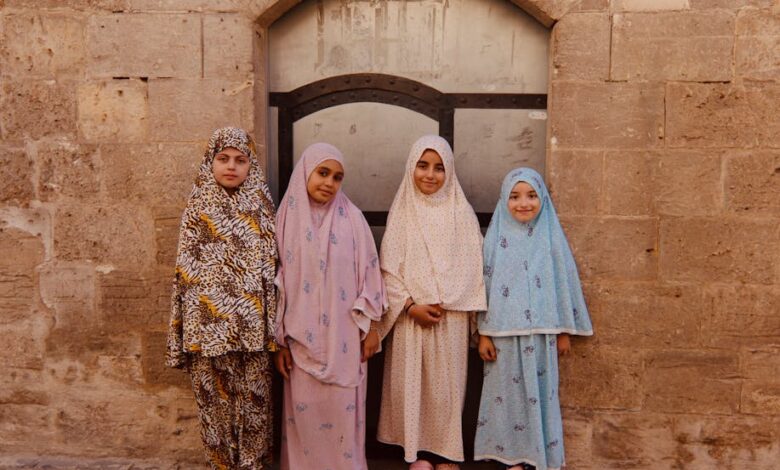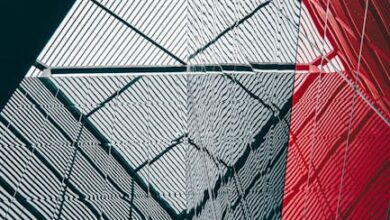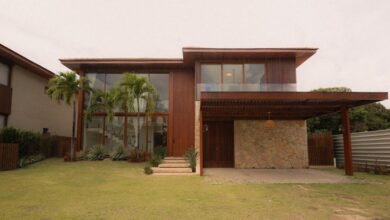Implementation Details of Tree-Diffusion: Architecture and Training for Inverse Graphics

Implementation Details of Tree-Diffusion: Architecture and Training for Inverse Graphics
Estimated Reading Time: 7 minutes
- Tree-Diffusion is a novel inverse graphics approach that generates symbolic program representations from images using an iterative refinement process.
- Its core architecture leverages PyTorch, robust image encoders like NF-ResNet26, and a unique input strategy of stacking current, target, and difference images.
- The training methodology is enhanced by initializing the search with an autoregressive baseline, significantly improving efficiency and guiding the iterative process.
- Key search parameters, including a beam size of 64 and a maximum node expansion budget of 5000, are crucial for balancing thorough exploration with computational feasibility.
- The system provides practical insights for developing inverse graphics, advocating for specialized image encoders, contextual inputs, and strong baseline initialization.
- The Essence of Tree-Diffusion: Bridging Images to Code
- Unpacking the Tree-Diffusion Architecture and Training Methodologies
- Practical Strategies for Building Inverse Graphics Systems
- Tree-Diffusion in Action: A Real-World Perspective
- Conclusion
- Frequently Asked Questions
Inverse graphics, the challenging task of inferring a program or scene description from an image, is a frontier in artificial intelligence with vast potential. Imagine being able to automatically convert a photograph into a 3D model, or a sketch into executable code. Tree-Diffusion emerges as a groundbreaking approach in this domain, leveraging a diffusion-like process to iteratively refine programmatic representations. This article delves into the crucial implementation details—the nuts and bolts of its architecture and training—that underpin Tree-Diffusion’s ability to tackle the complexities of inverse graphics.
Understanding these specifics is vital for anyone looking to reproduce, extend, or simply grasp the technical ingenuity behind this method. From the choice of deep learning framework to the intricacies of image processing and search algorithms, every decision contributes to the system’s overall performance and robustness.
The Essence of Tree-Diffusion: Bridging Images to Code
At its core, Tree-Diffusion seeks to synthesize structured programs (like Constructive Solid Geometry or SVG programs) from visual input. Unlike traditional generative models that might output pixels, Tree-Diffusion aims for a symbolic representation—a “code” that, when executed, renders the target image. This involves navigating a vast space of possible programs, a task inherently difficult due to the discrete and hierarchical nature of programs.
The “diffusion” aspect comes into play as the model doesn’t just predict the program in one go. Instead, it starts with an initial program and iteratively refines it through a series of “small mutations.” This iterative process, guided by a policy and value network, allows the system to gradually converge on a program that accurately reconstructs the input image. It’s akin to a sculptor progressively chipping away at a block to reveal the desired form, but here, the form is a program, and the tools are neural networks.
Unpacking the Tree-Diffusion Architecture and Training Methodologies
The success of any sophisticated AI model often lies in its meticulous implementation. For Tree-Diffusion, the specific choices made in its architecture and training regimen are paramount. The authors provide a clear overview of these choices, starting with the foundational software and hardware components, and extending to the unique strategies for handling image input and program generation.
As detailed in the research paper:
Table of Links
Abstract and 1. Introduction
Background & Related Work
Method
3.1 Sampling Small Mutations
3.2 Policy
3.3 Value Network & Search
3.4 Architecture
Experiments
4.1 Environments
4.2 Baselines
4.3 Ablations
Conclusion, Acknowledgments and Disclosure of Funding, and References
Appendix
A. Mutation Algorithm
B. Context-Free Grammars
C. Sketch Simulation
D. Complexity Filtering
E. Tree Path Algorithm
F. Implementation Details
F Implementation Details
We implement our architecture in PyTorch [1]. For our image encoder we use the NF-ResNet26 [4] implementation from the open-sourced library by Wightman [38]. Images are of size 128 × 128 × 1 for CSG2D and 128 × 128 × 3 for TinySVG. We pass the current and target images as a stack of image planes into the image encoder. Additionally, we provide the absolute difference between current and target image as additional planes.
For the autoregressive (CSGNet) baseline, we trained the model to output ground-truth programs from target images, and provided a blank current image. For tree diffusion methods, we initialized the search and rollouts using the output of the autoregressive model, which counted as a single node expansion. For our re-implementation of Ellis et al. [11], we flattened the CSG2D tree into shapes being added from left to right. We then randomly sampled a position in this shape array, compiled the output up until the sampled position, and trained the model to output the next shape using constrained grammar decoding.
This is a departure from the pointer network architecture in their work. We think that the lack of prior shaping, departure from a graphics specific pointer network, and not using reinforcement learning to fine-tune leads to a performance difference between their results and our re-implementation. We note that our method does not require any of these additional features, and thus the comparison is fairer. For tree diffusion search, we used a beam size of 64, with a maximum node expansion budget of 5000 nodes.
The choice of PyTorch as the deep learning framework is a common and practical one, known for its flexibility and dynamic computational graph. A crucial component is the image encoder, which translates raw pixel data into a meaningful latent representation. Here, the NF-ResNet26, a robust neural network architecture, is employed. This choice signifies a preference for strong, pre-existing visual feature extraction capabilities, allowing the core Tree-Diffusion model to focus on the program synthesis task rather than learning basic image features from scratch.
Input image handling is also quite clever. Instead of just feeding a single image, Tree-Diffusion processes images of varying dimensions (128x128x1 for CSG2D and 128x128x3 for TinySVG) by stacking the current and target images as multiple planes. Furthermore, providing the absolute difference between current and target images as additional planes offers the model direct feedback on “how far it is” from the goal. This enriched input helps the model understand not just what the target looks like, but also how the current program output compares to it, guiding the iterative refinement process more effectively.
To kickstart the tree diffusion process, the system leverages an autoregressive (CSGNet) baseline. This model is initially trained to directly output ground-truth programs from target images. Its output then serves as the initial state for Tree-Diffusion’s search and rollouts, essentially providing a strong starting point and counting as a single node expansion. This initialization strategy significantly improves efficiency by giving the iterative process a good head start, avoiding random or poor initial program guesses.
The paper also sheds light on a re-implementation of prior work by Ellis et al. [11]. The Tree-Diffusion authors re-implemented this baseline by flattening the CSG2D tree and using constrained grammar decoding, a departure from the original pointer network architecture. This methodological shift is noted as a key reason for performance differences, emphasizing how architectural choices, even in baselines, can profoundly impact results. The authors stress that Tree-Diffusion’s effectiveness without these “additional features” (like prior shaping or reinforcement learning fine-tuning) makes for a fairer comparison, highlighting its inherent strength.
Finally, the efficiency and depth of the tree diffusion search are controlled by specific parameters: a beam size of 64 and a maximum node expansion budget of 5000 nodes. A larger beam size allows the search to explore more promising paths concurrently, while the node expansion budget prevents infinite searches, balancing thoroughness with computational cost. These parameters are crucial for optimizing the search process, enabling the model to explore a sufficiently broad space of programs without becoming computationally intractable.
Practical Strategies for Building Inverse Graphics Systems
For researchers and developers inspired by Tree-Diffusion, here are actionable steps to consider when implementing or developing similar inverse graphics systems:
- 1. Select a Robust and Specialized Image Encoder: Do not underestimate the power of a well-chosen image encoder. Utilize architectures like NF-ResNet26 or other state-of-the-art models that have proven effective in extracting meaningful features from complex images. Consider pre-trained encoders to save computational resources and leverage existing visual knowledge.
- 2. Augment Image Inputs with Contextual Information: Beyond just the target image, provide your model with richer input signals. Stacking current and target images, along with their absolute differences, offers a direct comparative context. This empowers the model to understand the gap between its current output and the desired outcome, facilitating more efficient iterative refinement.
- 3. Leverage Strong Baselines for Initialization: Starting program synthesis from scratch can be inefficient. Train a simpler, faster autoregressive model to generate initial program guesses. Using these outputs to initialize more complex search-based methods (like Tree-Diffusion) can significantly reduce training time and improve overall performance by guiding the search towards promising regions of the program space.
Tree-Diffusion in Action: A Real-World Perspective
Consider the field of computer-aided design (CAD). A designer might sketch a complex mechanical part by hand or provide a raster image of an existing component. Traditionally, this image would need to be manually re-created in CAD software, a time-consuming and error-prone process. An inverse graphics system powered by Tree-Diffusion could potentially take that sketch or image and automatically generate a corresponding Constructive Solid Geometry (CSG) program. This program would define the part using basic geometric primitives and boolean operations (union, intersection, subtraction), essentially giving the designer an editable, parametric model ready for manufacturing or further modification. This capability would drastically accelerate design iterations and bridge the gap between intuitive visual input and precise programmatic output.
Authors:
(1) Shreyas Kapur, University of California, Berkeley (srkp@cs.berkeley.edu);
(2) Erik Jenner, University of California, Berkeley (jenner@cs.berkeley.edu);
(3) Stuart Russell, University of California, Berkeley (russell@cs.berkeley.edu).
This paper is available on arxiv under CC BY-SA 4.0 DEED license.
Conclusion
The implementation details of Tree-Diffusion reveal a meticulously engineered system designed to tackle the formidable challenge of inverse graphics. From its PyTorch foundation and advanced image encoding to its strategic input preparation and efficient search algorithms, every component plays a critical role. The integration of an autoregressive baseline for initialization and the careful consideration of comparison methodologies highlight a commitment to robust and fair scientific inquiry. Tree-Diffusion represents a significant step forward, demonstrating that by combining iterative refinement with powerful neural architectures, we can build systems capable of inferring complex programmatic structures from visual data.
Frequently Asked Questions
What is inverse graphics?
Inverse graphics is an AI task focused on inferring a scene description, 3D model, or programmatic representation from a 2D image. It aims to understand the underlying structure that generated the visual input.
How does Tree-Diffusion differ from traditional generative models?
Unlike models that directly output pixels, Tree-Diffusion generates a symbolic program (e.g., CSG or SVG code) that, when executed, renders the target image. It uses an iterative refinement process, similar to diffusion, rather than a single-pass generation.
What deep learning framework is used for Tree-Diffusion?
Tree-Diffusion is implemented using PyTorch, known for its flexibility and dynamic computational graph capabilities.
What is the purpose of the image encoder?
The image encoder (e.g., NF-ResNet26) translates raw pixel data from the input image into a meaningful, condensed latent representation. This allows the Tree-Diffusion model to work with high-level visual features rather than raw pixels.
How is Tree-Diffusion initialized?
The system is initialized using the output of an autoregressive (CSGNet) baseline model. This provides a strong initial program guess, significantly improving the efficiency and effectiveness of the subsequent iterative search and refinement process.





